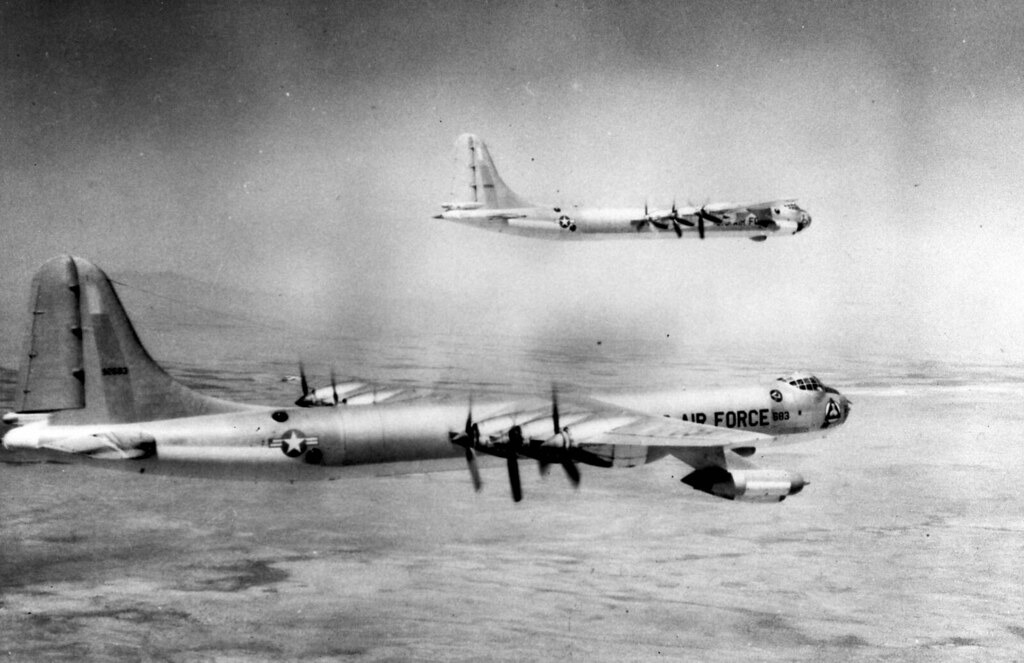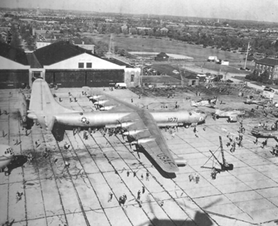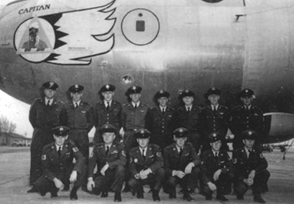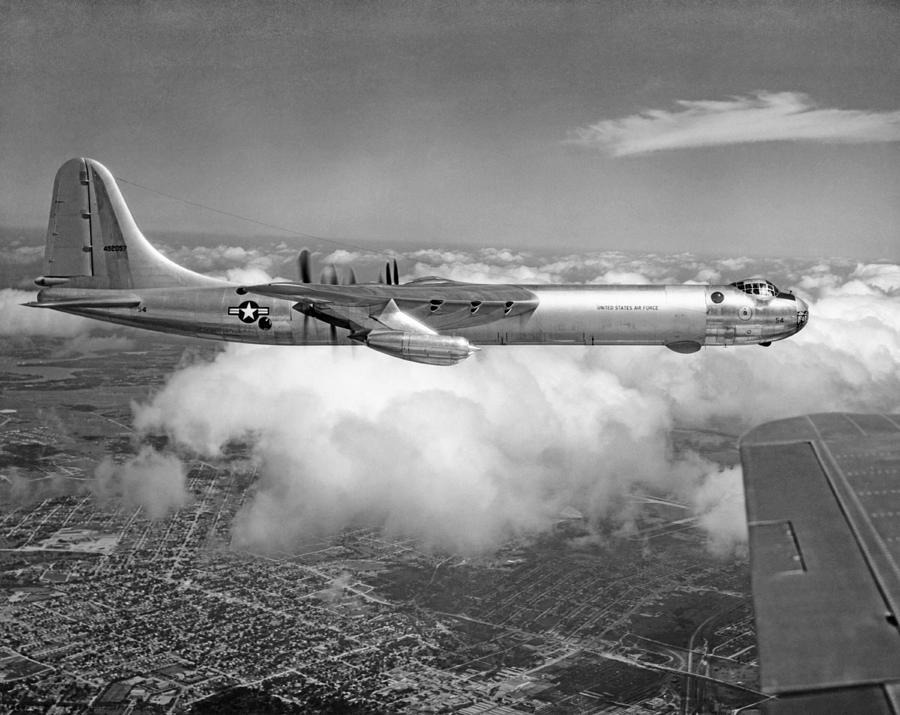- Yes
- No
Background
Spoiler
The B-36F is a further improvement of the B-36D, incorporating the installation of more powerful engines as well as an A-7 Chaff Dispenser.
The first flight of the B-36F model was on November 18th, 1950; the aircraft was cleared for operational service in March 1951 although units were not delivered until August. Production of the aircraft would end in October of 1951, with the last unit being delivered in may of the following year with a total of 34 produced.
A large proportion of the B-36F’s would be modified into Featherweight II or III standards; With II being extra tools and crew comfort items being stripped off the airplane, while III also included the removal of most of the defensive armament save for the tail weaponry.
The B-36F would serve as the basis for the B-36H and the YB-60, as well as special programs, such as mounting a modified deployable F-84E.
There is no hard date for the phaseout of the B-36F, although it is thought they were entirely phased out by the end of 1959.
on May 28th, 1952, a B-36F took off for a training sortie out of Carswell AFB. Just after liftoff, while in initial climb, the crew informed ground that the aircraft had lost an engine cowling and then obtained the permission to return for a safe landing. On touchdown, one of the main landing gears collapsed. The aircraft went out of control, veered off runway and came to rest in flames, killing several of the crew members. It was reported that the total weight of the airplane upon landing was too high, causing the undercarriage to collapse.
Technical Data
Specifications
Crew - 15
Length 49.4 m
Height - 14.3 m
Wingspan - 70.1 m
Empty Weight - 76,043 kg
Gross Weight - 115,349 kg
Max Takeoff Weight - 167,829 kg
Powerplant A - 6 x Pratt & Whitney Wasp Major R-4360-53 Pusher Prop Radial Engines (2,800 kW each)
Powerplant B - 4 x General Electric J47-GE-19 Turbojet Engines (23 kN dry)
Takeoff Run - 1,216 m at Sea Level.
Rate of climb - 4.67 m/s Standard. 10.46 m/s Emergency Power.
Cruising Speed - 378 km/h
Max Speed - 672 km/h at 11,308 m
Service Ceiling - 13,411 m
Range - 5,199 km
Armament
Up to 72,000 lb (32,659 kg) of Bombs Standard, 86,000 lb (39009 kg) Overload.
Mk-4 Nuclear Bombs.
Mk-5 Nuclear Bombs.
Mk-6 Nuclear Bombs.
Mk-8 Nuclear Bombs.
Mk-14 Nuclear Bombs.
Mk-17 Nuclear Bombs.
Mk-18 Nuclear Bombs.
Mk-21 Nuclear Bombs.
Mk-36 Nuclear Bombs.
Mk-39 Nuclear Bombs.
AN-M30A1 100 lb Bombs.
M88 220 Lb Bombs.
AN-M57A1 250 lb Bombs.
AN-MK53 Mod.1 325 lb Depth Charge Bombs.
AN-MK54 Mod.1 350 lb Depth Charge Bombs.
AN-M57A1 250 lb Bombs.
132 x AN-M64A1500 lb Bombs.
132 x AN-M85A2 500lb Bombs.
129 x MK-82 500 lb Bombs.
48 x M117 750 lb Bombs.
72 x AN-M65A1 1,000 lb Bombs.
72 x AN-M59A1 1,000 lb Bombs.
72 x AN-MK33 1,000 lb Bombs
Mk 36 1000 lb Sea Mine Bombs.
Mk 36 Mod 1 1000 lb Sea Mine Bombs.
MK26 Mod 1 1000 lb Sea Mine Bombs.
44 x AN-MK1 1,600 lb Bombs.
MK 25 2,000 lb Sea Mine Bombs.
Mk 10 Mod.9 2,000 lb Sea Mine Bombs.
28 x AN-M66A2 2,000 lb Bombs.
12 x AN-M56 4,000 lb Bombs.
4 x T-10 12,000 lb Bombs.
3 x M110 22,000 lb Bombs.
2 × T-12 43,000 lb Bombs.
(2 x 1) x 8 M24A1 20mm Cannons in Retractable Mounts. (16 Cannons Total) (92,000 Ammunition Total)
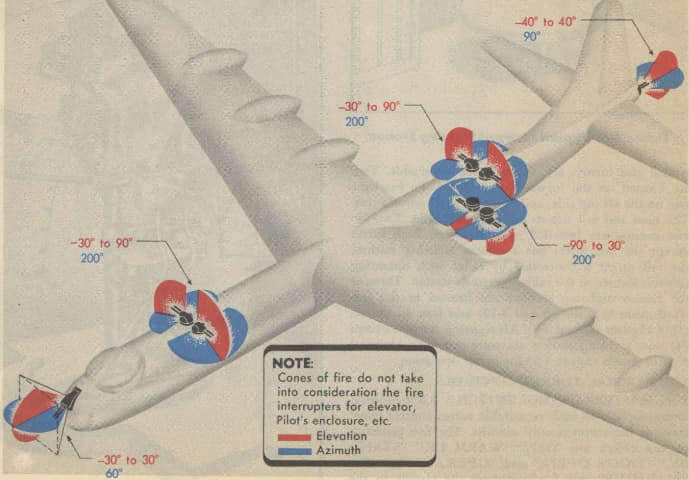
Avionics
A-7 Chaff Dispenser
K-3A Bombing and Navigational Radar
Y-3A Optical and Radar Sight
AN/APG-32 Radar (Tail Gun)
AN/APX-6 IFF
Images
Sources
Spoiler
SAC 26-MAR-1954 B-36F Peacemaker (PDF)
Marcelle S. Knaack’s Encyclopedia of U.S. Air Force Aircraft and Missile Systems Volume II, Post-World War II Bombers 1945-1973 (Book)
Warbird Tech Series Vol.24 (PDF)
